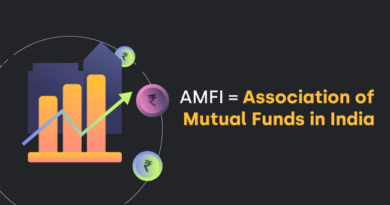The Evolution and Future of the Global Mutual Fund Industry: A Deep Dive into Trends, Challenges, and Opportunities for the Indian Market
Introduction
The global mutual fund industry has seen significant transformation over the last decade, driven by various factors such as technological advancements, changing investor preferences, regulatory reforms, and the rise of sustainable investing. These shifts have had profound implications on the mutual fund industry in India, where the market has experienced rapid growth. As India integrates more closely with global markets, understanding the latest developments, trends, and challenges in the global mutual fund industry is essential for stakeholders. This article delves into these aspects, providing insights into how the Indian market can align itself with global best practices while addressing its unique challenges.
Global Trends in the Mutual Fund Industry
1. Sustainable and Responsible Investing: Globally, there is a growing emphasis on Environmental, Social, and Governance (ESG) factors as key criteria for investment decisions. According to the Global Sustainable Investment Alliance, assets under management (AUM) in sustainable investments have grown exponentially, particularly in Europe and North America. This trend is gaining momentum in India, where several Asset Management Companies (AMCs) have launched ESG-focused funds. The integration of ESG criteria not only meets the demands of socially conscious investors but also aligns with the long-term sustainability goals of companies.
2. Technological Disruption and Innovation: The mutual fund industry is leveraging technology like never before. The adoption of artificial intelligence (AI), machine learning (ML), and big data analytics is transforming the way funds are managed and distributed. Robo-advisors are making personalized investment advice accessible to a broader audience, while blockchain technology is enhancing transparency and reducing operational costs. In India, the fintech revolution is driving digital distribution channels, allowing for seamless investment processes and greater reach, especially in underpenetrated markets.
3. Rise of Passive Investing: Passive investing, particularly through Exchange-Traded Funds (ETFs) and index funds, has been on the rise globally. Investors are increasingly favoring these low-cost, transparent investment options, especially as evidence suggests that many active managers struggle to consistently outperform their benchmarks. In India, while actively managed funds still dominate the market, there is a growing acceptance of passive strategies, especially among institutional investors and millennials.
4. Globalization of Investment Strategies: With increasing globalization, investors are looking beyond their domestic markets. Mutual funds are offering more globally diversified products, enabling investors to gain exposure to international markets. This trend is mirrored in India, where AMCs are introducing funds that allow Indian investors to participate in global growth stories, particularly in sectors like technology, healthcare, and renewable energy.
Current Growth and Developments in the Indian Mutual Fund Industry
1. Exponential Growth in AUM: The Indian mutual fund industry has witnessed remarkable growth, with AUM surpassing INR 40 trillion by 2023. This growth is attributed to the increasing participation of retail investors, particularly through Systematic Investment Plans (SIPs). The SIP model has become a cornerstone of the industry, promoting disciplined investing among retail investors and contributing to consistent inflows, even during market volatility.
2. Regulatory Reforms Driving Transparency: The Securities and Exchange Board of India (SEBI) has played a pivotal role in shaping the mutual fund industry. Recent regulatory changes, such as the introduction of new risk-o-meter guidelines, restrictions on total expense ratios (TER), and enhanced disclosure norms, have improved transparency and investor protection. These reforms have also increased the competitiveness of the industry, encouraging innovation and efficiency.
3. Product Innovation and Diversification: Indian AMCs have been proactive in launching innovative products to cater to the evolving needs of investors. The introduction of target maturity funds, multi-asset funds, and sector-specific funds has provided investors with more tailored investment options. Moreover, the availability of international funds has allowed Indian investors to diversify their portfolios globally, mitigating domestic economic risks.
4. Increased Retail Participation from B30 Cities: One of the significant developments in the Indian mutual fund industry is the increasing participation from beyond the top 30 (B30) cities. This trend is fueled by the penetration of digital platforms, investor education initiatives, and the growing awareness of mutual funds as a viable investment option. The rise in retail participation from these regions is expected to be a key driver of the industry’s growth in the coming years.
Business Statistics and Market Challenges
1. Key Statistics:
- AUM Growth: The AUM of Indian mutual funds has grown at a CAGR of 14% over the past decade, making it one of the fastest-growing segments in the financial sector.
- SIP Inflows: Monthly SIP inflows have consistently exceeded INR 12,000 crore, reflecting the growing adoption of systematic investing among retail investors.
- Retail Participation: Retail investors now account for over 55% of the total AUM, with a significant portion coming from B30 locations.
2. Challenges:
- Market Volatility and Uncertainty: The mutual fund industry is inherently tied to market performance. Volatility, driven by both global and domestic factors, can lead to fluctuating AUM and investor sentiment. In India, the equity market’s reliance on foreign institutional investors (FIIs) adds another layer of complexity.
- Regulatory Compliance: While regulatory reforms have strengthened the industry, they also impose significant compliance requirements. Smaller AMCs may find it challenging to keep pace with these changes, potentially leading to consolidation in the industry.
- Competition from Alternative Investments: The rise of alternative investment platforms, such as peer-to-peer lending, robo-advisory services, and digital gold, presents competition to traditional mutual funds. These platforms often appeal to younger investors seeking higher returns or niche investment opportunities.
Future Growth Prospects for the Indian Mutual Fund Industry
1. Digital Transformation and Fintech Integration: The future of the mutual fund industry in India will be heavily influenced by digital transformation. The integration of advanced analytics, robo-advisors, and AI-driven investment platforms will enhance the personalization of investment strategies and improve operational efficiency. This will not only attract tech-savvy millennials but also help in penetrating underserved markets.
2. Focus on Investor Education and Financial Literacy: Financial literacy is crucial for the continued growth of the mutual fund industry. AMCs, along with SEBI and other stakeholders, need to intensify efforts to educate potential investors, particularly in rural and semi-urban areas. Tailored financial literacy programs can demystify mutual fund investments and encourage more households to invest in these instruments.
3. Sustainability and ESG Investing: As the global focus on sustainability intensifies, Indian AMCs will likely place greater emphasis on ESG investing. The growth of ESG funds will attract a new segment of investors who prioritize ethical and responsible investing. This trend is expected to gain traction as regulatory frameworks around ESG disclosures become more robust.
4. Global Integration and Cross-Border Investments: The Indian mutual fund industry is poised to become more globally integrated, with an increasing number of funds offering exposure to international markets. This trend will be driven by the growing demand for portfolio diversification and the desire to tap into global growth opportunities. AMCs that can effectively navigate the complexities of cross-border investments will have a competitive edge.
5. Expansion of Passive Investment Products: While passive investing is still in its nascent stage in India, the demand for ETFs and index funds is expected to grow. As investors become more cost-conscious and aware of the benefits of passive investing, AMCs will need to expand their offerings in this segment. The introduction of innovative passive products, such as thematic ETFs, will further drive this growth.
Conclusion
The Indian mutual fund industry is on a dynamic growth trajectory, supported by favorable regulatory reforms, technological advancements, and increasing investor participation. However, the industry must navigate several challenges, including market volatility, regulatory compliance, and competition from alternative investments. The future of the industry will depend on its ability to innovate, embrace digital transformation, and cater to the evolving needs of a diverse investor base. By aligning with global trends, such as ESG investing and passive strategies, the Indian mutual fund industry can continue to grow and provide significant value to investors in the years to come.
This comprehensive overview provides a detailed understanding of the current state and future prospects of the mutual fund industry, with a particular focus on its relevance to the Indian market. The insights presented here should serve as a valuable resource for industry stakeholders, investors, and policymakers as they navigate the complexities of this evolving sector.
-Dr Rakesh Agarwal




